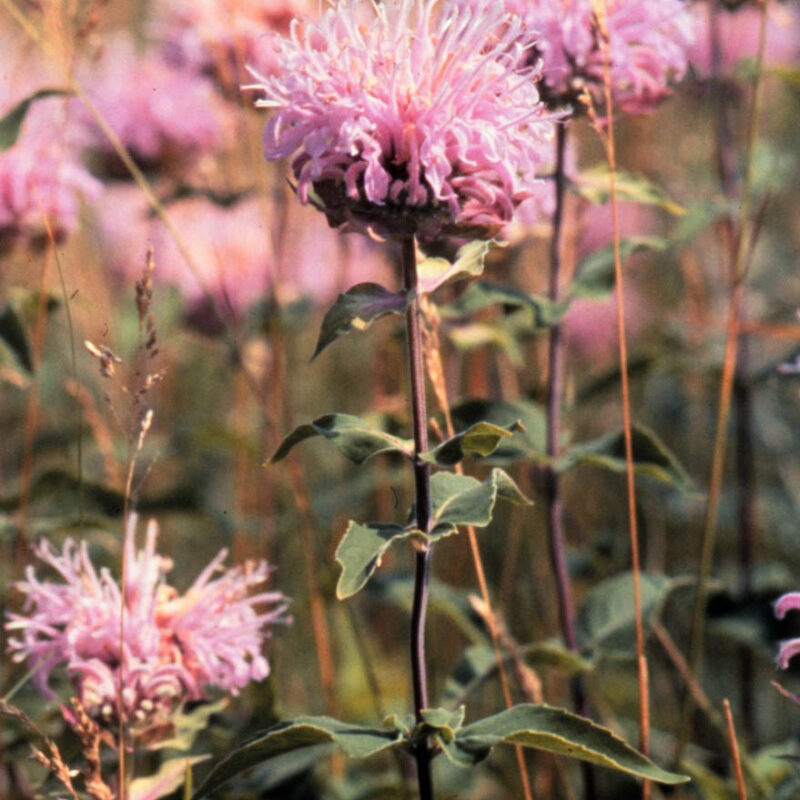Wild BergamotMonarda fistulosa
a.k.a. Bee Balm
A native perennial herb that is usually 3-4' feet tall and clumped. A beautiful mint that is used in slope and buffer stabilization because of its ability to hold soil. It is used in landscape design where it may be a little unruly due to its aggressive behavior. It is an early successional species that is used in restorations, especially in moist to dry prairies.
USDA symbol: MOFI
General Information
| Plant Type | Forb |
|---|---|
| Height | 3 to 4 feet |
| Light Exposure | Part Sun, Sun |
| Soil Moisture | Dry, Medium |
| Bloom Color | Purple |

Tolerances
| Flooding / Inundation Tolerance | Moderate |
|---|---|
| General Resilience | 10 |
| Salt Tolerance | Medium |
| Stress Tolerance | General Disturbance |
Pollinator Value: Very High
| Bloom Months | July to August |
|---|---|
| Larval Host of | Bees, Moths |
| Specific Pollinators Hosted | Dufourea monardae, Lintneria eremitus, Pyrausta generosa, Pyrausta signatalis |
| Pollinator Benefit | Insect Pollinated, Provides Nectar, Stem Nesting |
Project Planning
| Project Type | Boulevard, Erosion Control, Rain Garden, Restoration, Sandy or Engineered Soils, Shoreline Buffer |
|---|---|
| Coefficient of Conservatism | 3 |
| Herbivore Sensitivity | Medium |
| Lifespan | Perennial |
| Rate of Spread | Slow |
| Soil Stabilization | Shallow |
| Vegetative Reproduction | Clonal |
Range
| County | Aitkin, Anoka, Becker, Beltrami, Benton, Big Stone, Blue Earth, Brown, Carver, Cass, Chippewa, Chisago, Clay, Clearwater, Cottonwood, Crow Wing, Dakota, Dodge, Douglas, Faribault, Fillmore, Freeborn, Goodhue, Grant, Hennepin, Houston, Hubbard, Isanti, Itasca, Jackson, Kandiyohi, Kittson, Koochiching, Lake, Le Sueur, Lincoln, Lyon, Mahnomen, Marshall, McLeod, Meeker, Mille Lacs, Morrison, Mower, Murray, Nicollet, Norman, Olmsted, Otter Tail, Pennington, Pine, Pipestone, Polk, Pope, Ramsey, Red Lake, Redwood, Renville, Rice, Rock, Roseau, Sherburne, Sibley, St. Louis, Stearns, Steele, Stevens, Swift, Todd, Traverse, Wabasha, Wadena, Waseca, Washington, Watonwan, Winona, Wright, Yellow Medicine |
|---|---|
| Ecoregion | Driftless Area, Lake Agassiz Plain, North Central Hardwood Forests, Northern Glaciated Plains, Northern Lakes and Forests, Northern Minnesota Wetlands, Western Cornbelt Plains |
| Approximate Eco Province | Eastern Broadleaf Forest, Laurentian Mixed Forest, Prairie Parkland, Tallgrass Aspen Parklands |
